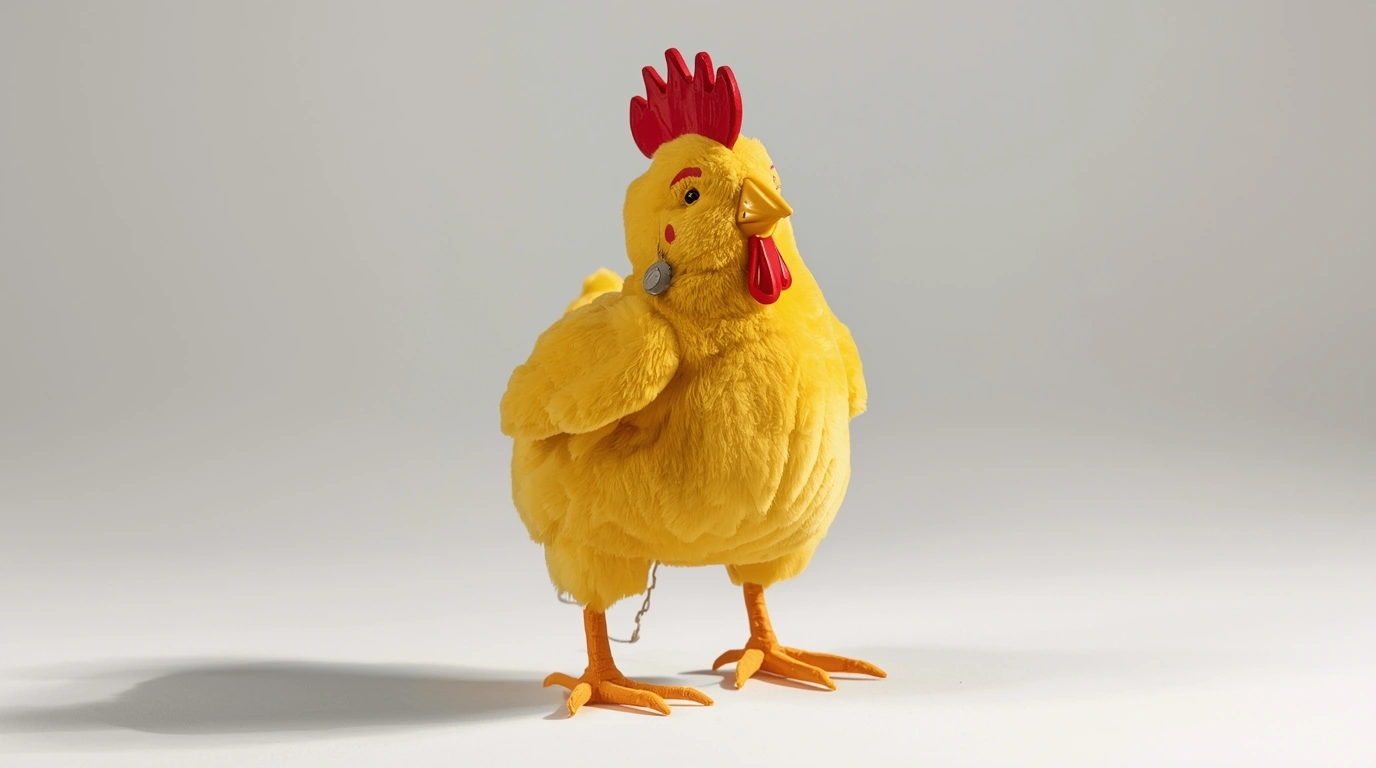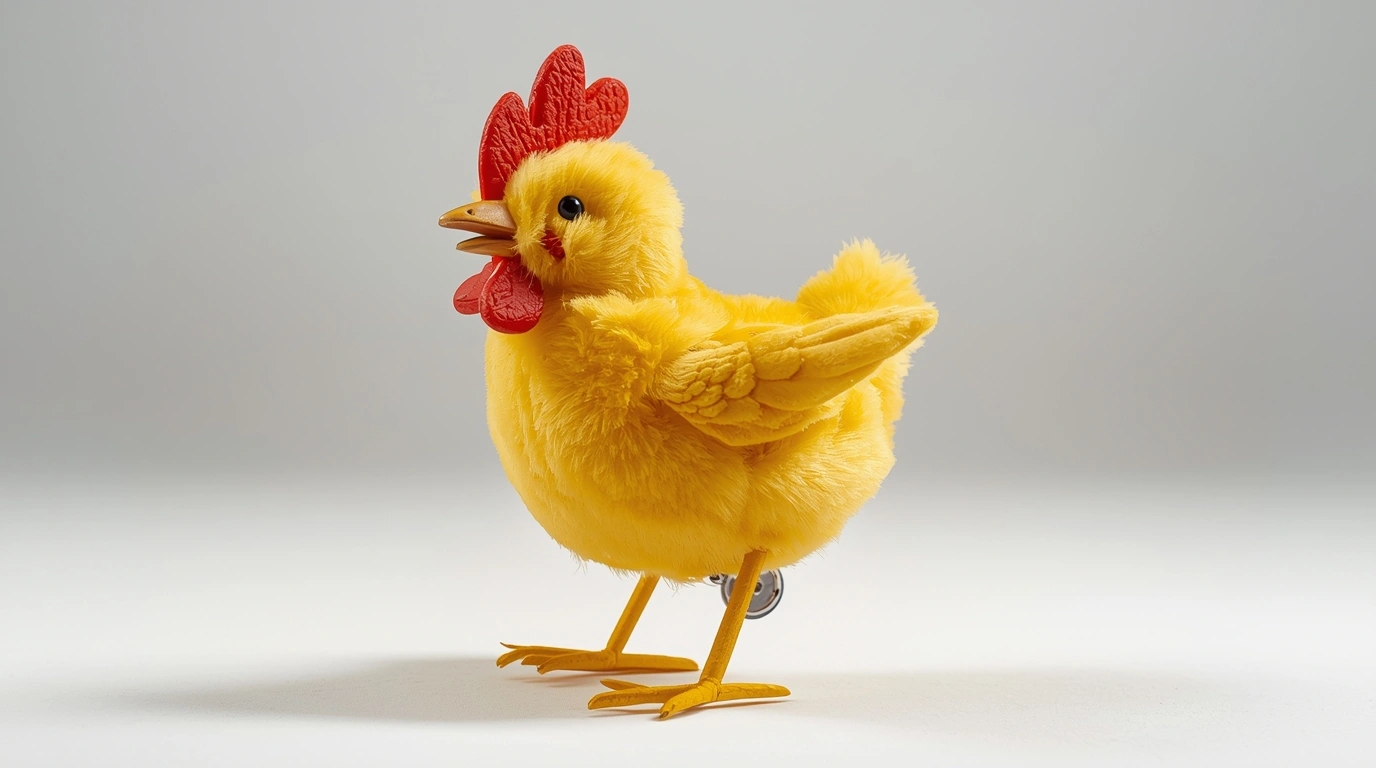History • Clockwork Classics
From early automata to the Yellow Jumping Chicken
Explore the craft, culture, and ingenuity behind wind-up toys — and see where our hopping chicken fits in.

The origins of mechanical play
Early automata
Clockmakers built spring-driven wonders to showcase precision — miniature figures that moved by stored energy. Luxury objects first, lessons in mechanics later.
Industrial momentum
Mass production, better steels, and standardised parts turned rare curiosities into family toys. Makers refined repeatable mechanisms that could power many designs.

1920s–1950s: the golden age
Fierce competition delivered lifelike motion: smarter cams, consistent springs, and playful litho finishes. The Yellow Jumping Chicken was born of this maturity — simple form, delightful hop.
Manufacturing excellence
Hand assembly met precision stampings: small, tough parts fitted with care. It’s why many pieces still run today — and why originality matters to collectors.
Cultural impact
Learning by winding
Wind-ups taught cause-and-effect, patience, and basic mechanics. They bridged play and STEM long before the acronym existed.
A mirror of the era
As prosperity rose, durable toys became symbols of quality at home — entertaining, educational, and made to last.
Mechanisms evolve
Calibrated springs, balanced cams, and repeatable gearing delivered smooth, repeatable motion in tiny bodies.
Materials & finish
Tinplate shells, steel springs, felt/plastic feet, and lithographed graphics — a durable recipe with charm.
Decline — and revival
Electronics took the spotlight from the 1960s onward. Yet today, collectors value the tactile logic of springs and cams — repairable, teachable, and sustainable.
Legacy that still inspires
Design principles from wind-ups — durability, clarity of motion, and delight — inform modern educational toys and kinetic art. Preserving originals keeps those lessons alive.
Why preserve
- Tech Visible mechanisms
- Culture Stories & context
- Education Tactile learning
- Art Litho & form
Timeline of mechanical toy development
Spring-driven automata in courts and workshops.
Industrial methods expand access to mechanical play.
Specialised toy makers and standardised parts.
Golden age: lively cams, refined springs, iconic designs.
Electronics eclipse clockwork in the mass market.
Collecting revival: preservation, education, community.
Want to go deeper?
Read model reviews, learn care routines, or ask us about authenticity.
